Metal fencing is a crucial component of many industrial operations, providing security, boundary demarcation, and sometimes even aesthetic appeal. Different types of industrial metal fencing cater to various needs, from high-security applications to basic boundary fences.
This article explores the various types of industrial metal fencing available today, highlighting their unique features and ideal applications.
Contents
1. Chain Link Fencing
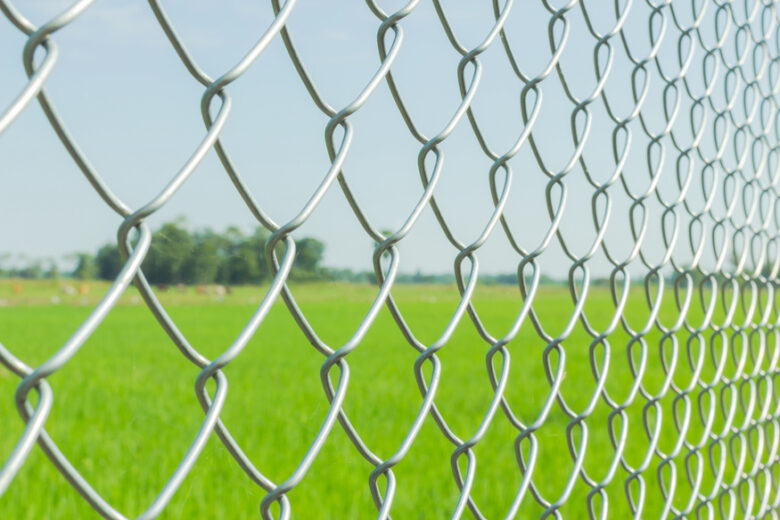
Source: ultimate-one.co.uk
Chain link fencing is perhaps the most widely recognised type of industrial metal fences. Made from woven steel wire, it forms a diamond pattern and is known for its durability and flexibility.
Advantages:
- Cost-Effective – It’s relatively inexpensive compared to other types of metal fencing.
- Visibility – Allows clear visibility, making it suitable for areas where surveillance is necessary.
- Versatility – Can be used in a variety of settings, including factories, warehouses, and construction sites.
Disadvantages:
- Security – While durable, it can be cut with the right tools and is not the most secure option for high-risk areas.
2. Steel Palisade Fencing
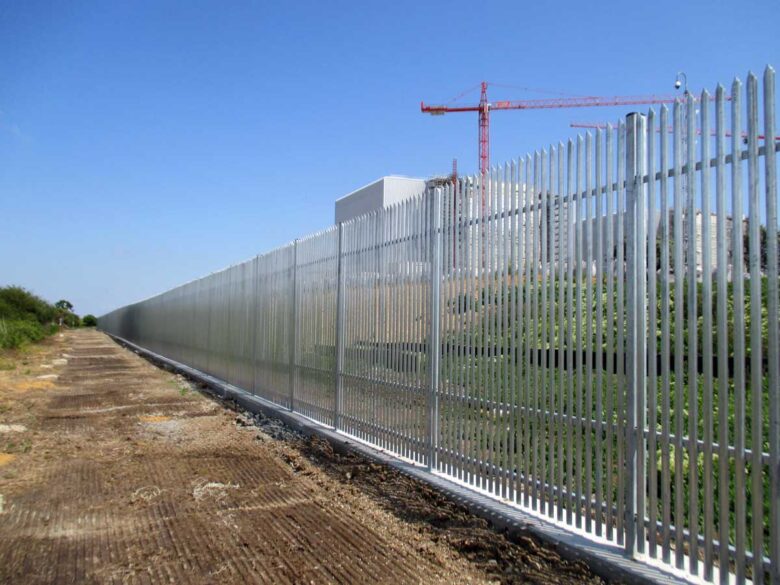
Source: barkersfencing.com
Steel palisade fencing is a popular choice for higher-security environments. It consists of vertical steel bars connected to horizontal rails and is known for its strength and imposing appearance. Some designs of steel palisade (such as the Lochrin Classic™ product from Lochrin Bain in the UK) feature enhanced security designs where the vertical pales pass through V-shaped slots in the horizontal rails to offer greater protection than a standard front fixed palisade fence.
Advantages:
- High Security – Difficult to climb and cut through, making it an excellent choice for deterring intruders.
- Longevity – Very durable and can withstand harsh environmental conditions.
- Customisable – Height and pale spacing can be adjusted to suit specific security needs.
Disadvantages:
- Cost – More expensive than chain link fencing.
- Installation – Often requires professional installation.
3. Welded Wire Fencing
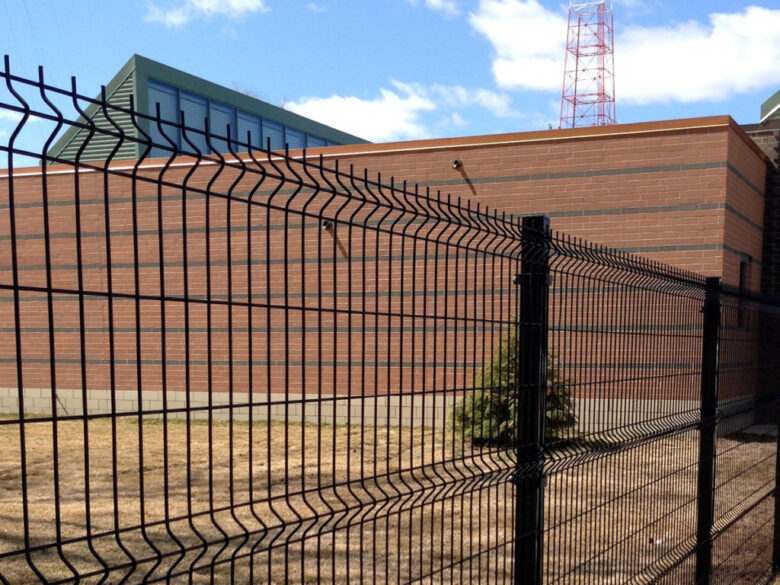
Source: acreagefences.com
Welded wire fencing, or wire mesh fences, is made by welding steel wires at their intersections to create a solid barrier. This type of fences is commonly used in industrial and commercial settings that favour aesthetics over security.
Advantages:
- Sturdy Design – Provides a higher level of security than chain link fencing.
- Aesthetics – Offers a neater appearance, suitable for places where looks are a consideration such as schools and public spaces.
- Adaptability – Can be used for a variety of applications, including machine guards and warehouse dividers.
Disadvantages:
- Flexibility – Less flexible compared to chain link fencing.
- Cost – Can be more expensive than chain link, depending on the gauge of the wire and the complexity of the design.
4. Expanded Metal Fencing
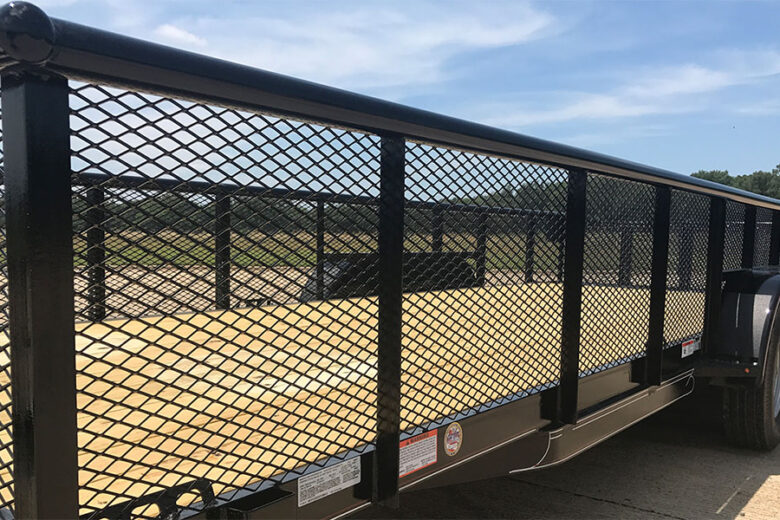
Source: diamondfence.com.au
Expanded metal fences is another mesh fencing solution that’s created by cutting and stretching metal sheets to form a mesh. This type of fencing is extremely durable and offers a unique aesthetic.
Advantages:
- Durability – Very strong and resistant to cutting and climbing.
- Visibility and Air Flow – Offers good visibility and allows for air circulation.
- Aesthetic Appeal – Has a distinctive appearance that can enhance the look of an industrial property.
Disadvantages:
- Cost – Generally more expensive than chain link and welded wire fencing.
- Weight – Heavier and may require stronger support structures.
5. Ornamental Iron Fencing
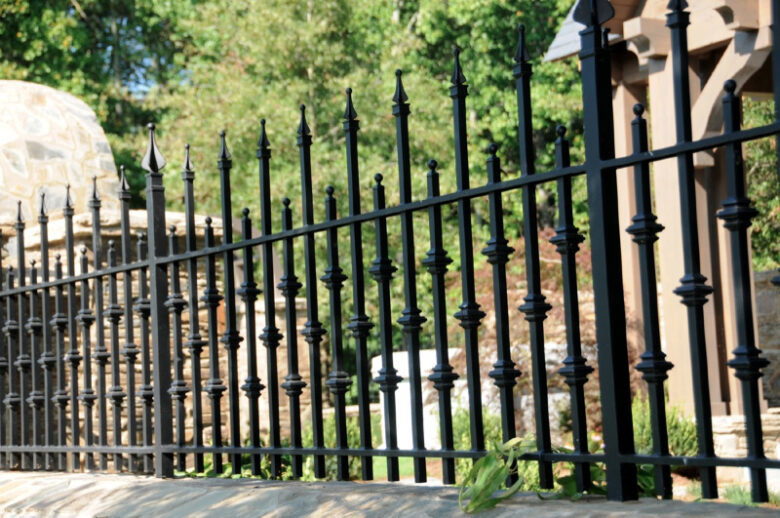
Source: alliedfence.com
Ornamental wrought iron fencing combines security with aesthetic appeal, often used in areas where appearance is as important as functionality. Whilst this type of fencing is more commonly found on housing estates and individual residential dwellings, it can also be used for helping to provide an unobtrusive barrier for hybrid office/industrial units.
Advantages:
- Aesthetic Value – Offers an elegant and classic look.
- Strength – Provides a good level of security and durability.
- Customisation – Can be customized with various designs and finishes.
Disadvantages:
- Cost – Typically more expensive due to the customisation and design work involved.
- Security – Generally considered less secure than other forms of industrial fencing.
- Maintenance – May require more maintenance, especially in harsh weather conditions, to prevent rusting.
Conclusion
Choosing the right type of industrial metal fencing depends on various factors, including the level of security required, the environmental conditions, budget constraints, and aesthetic considerations. From the highly secure steel palisade to the more visually pleasing ornamental iron fence, each type offers a unique set of benefits.
It’s important for businesses to assess their specific needs and consult with fencing professionals to determine the most appropriate fencing solution for their industrial premises. With the right choice, industrial metal fences can provide an effective and long-lasting security solution for years to come.
Additional Insights on Industrial Metal Fencing
The landscape of industrial metal fencing has evolved considerably over the last few decades, adapting to the changing needs of various industries. Innovations in materials, design, and technology have played a pivotal role in this evolution. Today’s industrial metal fences are not just barriers; they are sophisticated solutions that blend security, aesthetics, and functionality.
One of the major advancements in this field is the introduction of advanced coatings. Powder coating and galvanizing have revolutionised the durability of metal fences. These treatments protect against corrosion, a common issue in metal structures, thus extending the lifespan of metal fences and significantly reducing maintenance requirements. This advancement is particularly beneficial in harsh environments where traditional metal fences would deteriorate rapidly.
In addition to durability, there has been an increased focus on the aesthetic appeal of industrial fencing. Modern designs offer sleek, visually appealing fences that enhance the overall look of a facility while maintaining a robust level of security. This trend reflects the growing desire to balance functional requirements with architectural aesthetics, especially in facilities that are visible or accessible to the public.
Technology integration is another key development. Smart fencing solutions, equipped with sensors and surveillance capabilities, are becoming more prevalent. These fences not only act as physical barriers but also as part of a comprehensive security system. They can detect attempts at intrusion or damage, alerting security personnel in real-time. This integration is crucial in high-security areas such as datacentres, military installations, and other high-value facilities.
Environmental sustainability in fencing materials is also gaining traction. The industry is seeing a shift towards using recycled materials and eco-friendly manufacturing processes. This approach not only supports environmental conservation but also appeals to businesses looking to enhance their green credentials.
Lastly, customisation options have expanded, allowing businesses to tailor their fencing solutions to specific needs. Whether it’s varying the height, thickness, or design, fences can now be designed to fit the unique requirements of different industrial applications.
